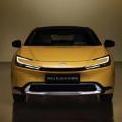Cerca nel Forum
Mostra i risultati del/dei TAG ''incendi batterie'' .
Trovato 1 risultato
-

Batterie EV: il perchè degli incendi spontanei delle ternarie
nella discussione ha aggiunto Maxwell61 in Elettrificazione e Tecnologie per l'Ambiente
Per parlare del grosso problema di incendi spontanei o in carica che afflige PHEV e BEV con chimiche al Nichel, dette ternarie, NMC o NCM, e NCA, (ma che con la nascita di batterie ternarie LMFP può ingenerare confusione), ecco una ottima e dettagliata spiegazione del capo del centro sviluppo dell'unico produttore che non ha avuto incendi spontanei: SK INNOVATION. Estratto introduttivo dalla lunga intervista: Q: What are the main causes of battery fire? Lee: The reason why batteries catch fire can be seen from two perspectives: the individual cell perspective and the battery pack perspective, which is a group of 300-400 individual cells. First, from the individual cell perspective, the “internal short circuit” is the biggest cause. In a battery cell, there is an anode, a cathode, a separator, and a kind of electrolyte. Among these, if the anode and cathode directly come in contact, an intense chemical reaction occurs, and this causes fire. We call this internal short circuit. There are five reasons that could make internal short circuit happen: poor alignment, absence of separator, inflow of foreign metal substances, internal deformation, and separator damage. For better understanding, let me make a simple comparison. Inside a battery, rectangular sheets of anode, separator, and cathode are stacked up repeatedly. If this process of stacking up the sheets is not precise enough and the edge of the anode sheet sticks out, or if the cathode rectangle is rolled in, that will cause a fire. We call this “poor alignment.” Likewise, if the separator that is placed between anodes and cathodes in the stacking process is not overlapped properly, the anodes and cathodes come in contact and causes a fire. We call this “absence of separator.” Next, we have the case where foreign metal substances splash in during the welding process. In this case, ions stick onto the metal and grows, causing a fire. We see this as an accident caused by “foreign metal substances.” As I said above, the sheets of anodes, separators, and cathodes are stacked up, and this is a pouch-type battery. There are other types of batteries that use different methods. One method is to make the anode, separator, and cathode like a long roll of toilet paper, overlap it in advance, and wrap it as if wrapping it on one’s hand. If you keep on wrapping, the palm side is flat, but the back side forms curves. As the batteries are used, expansion occurs, and the expansion shape differs on the curve and flat side, so it gets distorted. Over time, intensive chemical reaction occurs on this distorted part, causing a build-up of jagged crystals that cause fires. This is what we call “internal deformation.” The last cause of fire is “separator damage.” This can happen during the charging/discharging process. Usually, the cylinder-type batteries are vulnerable to this last cause. When the battery is charged and discharged over and over again, the inside expands. The cylinder-type has materials rolled up densely, so the separators are pressured when expansion occurs. If this is repeated, the micro-pores on the separator gradually deforms, and this can cause a fire. http://www.businesskorea.co.kr/news/articleView.html?idxno=69977 Su auto di larga diffusione, le SK Innovation le troviamo montato sulle Kia PHEV e EV, ma a partire dalla NIRO 2023 EV (forse anche la PHEV 2023) sono state scelte delle CATL, che qualche problema in passato lo hanno avuto. Hyundai Ioniq 5 e Kia EV6 dovevano avere le LG Chem, ma dopo lo scandalo delle Hyundai Kona, il gruppo Hyundai ha preferito non rischiare e ha affidato a SK Innovation. Le Ioniq 5 e Kia EV6 stanno dimostrando in pratica presso gli utenti che si possono permettere velocità altissime di ricarica fino alla fine, e sono probabilmente le più veloci sul mercato se si guarda la curva intera. L'alta affidabilità delle SK ha permesso questo, visto che proprio la carica veloce è il punto critico e rischioso. Fatti i complimenti a SK Innovation, comunque ritengo che non ci sia futuro in queste latenti bombe al Nickel, e il mercato si sta dirigendo nella direzione delle affidabili LFP e loro nuovi miglioramenti, già in corso.- 105 risposte
-
- 9
-

-

